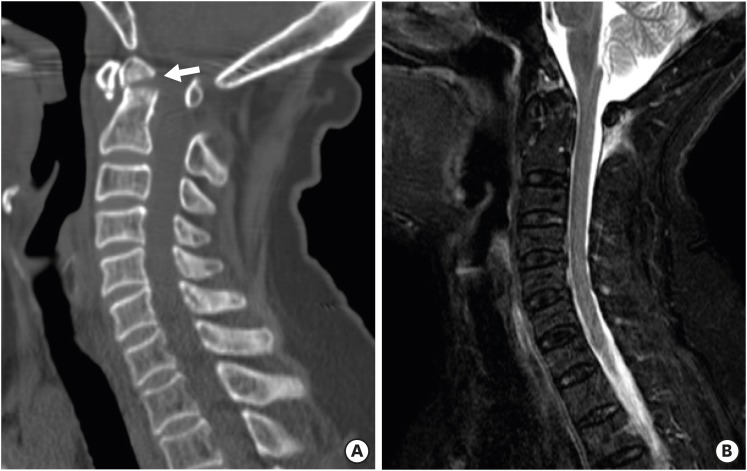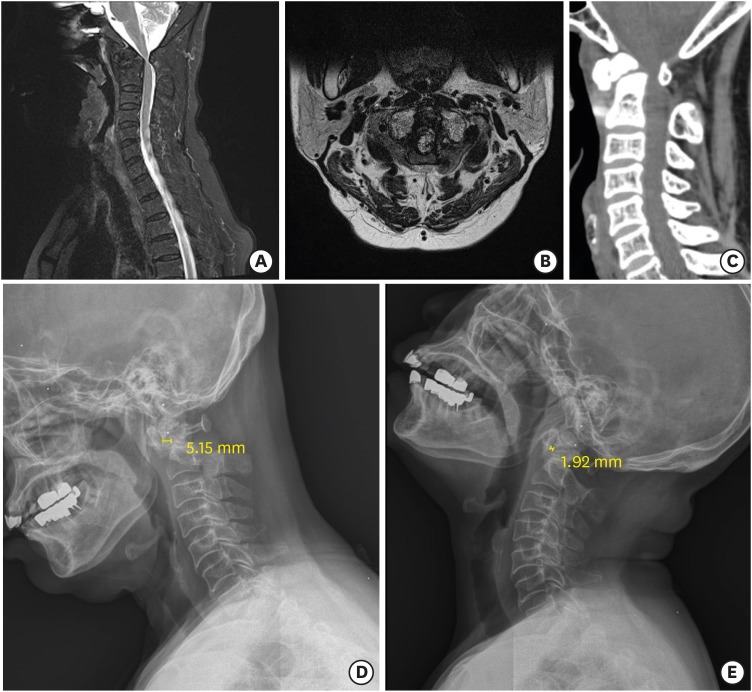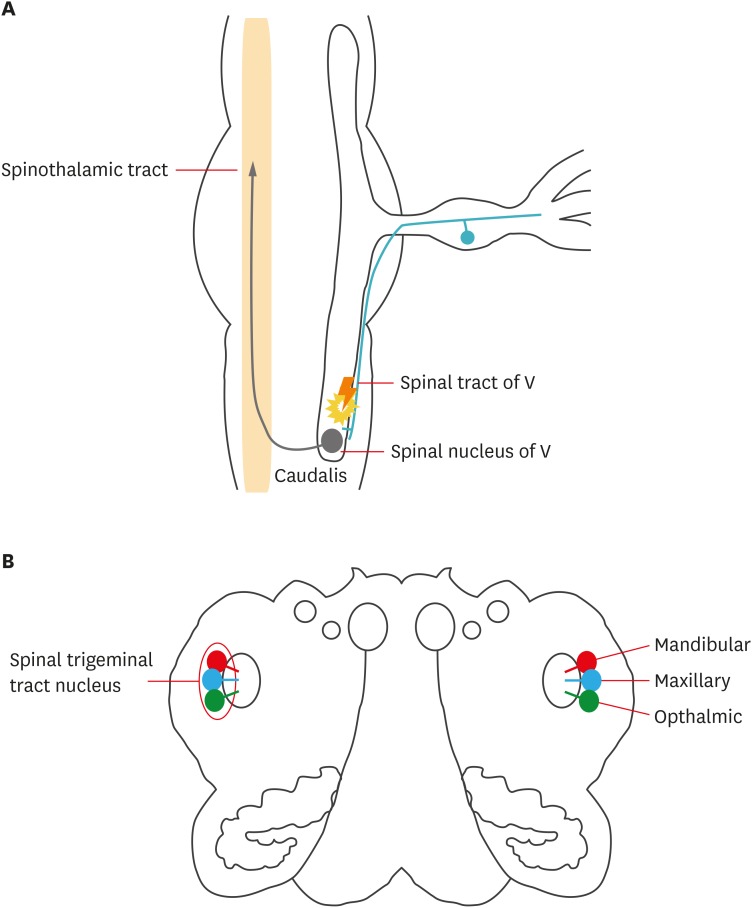Referred pain frequently arises in the orofacial lesion when headache arises and it can be originated from cervical lesion. Explanations of the pathogenesis are based on evidence from animal studies that found the trigeminal nerve to converge between the cervical spinal nerves at the dorsal horn in the caudal part of the medulla and in the upper level of the cervical spine.
9) Afferent trigeminal root fibers, which enter at upper pons descend in the dorsolateral part of the brain stem and project as far as the C2 spinal level and it constitute the spinal trigeminal tract. (
FIGURE 3A) Even if the longitudinal aspect of this nucleus is not uniform, it must be pointed out that the 3 branches of the trigeminal nerve are represented along this course through the spinal trigeminal tract (
FIGURE 3B). Fibers in the spinal trigeminal tract convey impulses concerned with thermal, tactile sense, and pain from the face, forehead, and mucous membranes of the nose and mouth. Trigeminal neuralgia is a chronic severe pain that affects the trigeminal nerve from face to brain. And even mild stimulation of face may trigger an excruciating pain.
2) Trigeminal neuralgia can occur as a result of aging, swollen blood vessel, tumors with nerve compression, multiple sclerosis, or a other disorders that damages the myelin sheath. Trigeminal neuralgia pain originates also from damage to the central trigeminal system in the upper spinal cord and the ponto-medullary levels in the brainstem.
4) Therefore, concussive trauma to the head and neck or upper back that cause injury to nerve pathways in the spinal cord and brain stem and it can be cause of trigeminal neuralgia.
6) After cervical trauma, facial pain can be triggered immediately or can occur months or years later. Our case suggests that trigeminal neuralgia results from spinal injury due to atlantoaxial instability after C2 odontoid process fracture. It is meaningful that the injury of upper cervical cord affects on trigeminal tract, nucleus. Surgical decompression was needed to our patient, but he refused the surgery, so he was treated with medications for symptoms control. Generally, trigeminal neuralgia can be treated with medications to relieve symptoms, the usual therapy is with an anticonvulsant such as carbamazepine or gabapentin.
3) Occasionally, sodium valproate and tricyclic antidepressant can be used, while others have reported cases cured by carbamazepine treatment alone.
1) For patients with side effects to oral administration of carbamazepine, surgical intervention such as microvascular decompression(in brain lesion), balloon compression, rhizolysis or rhizotomies and radio-frequency thermo-coagulation, regional nerve blockage also be utilized to achieve therapeutic effects.
8) Although it is a dangerous procedure, upper cervical chiropractic care is done to reverse the trauma-induced upper neck injury, thereby reducing irritation to the nerves in the brain stem and spinal cord that can trigger trigeminal neuralgia.
7) However, in case of using this method, specialized, skillful, and safe skills are needed.






 PDF
PDF ePub
ePub Citation
Citation Print
Print




 XML Download
XML Download